Traditionalist Issues
 |
 |
 |
 |
 |
 |
 |
Dialogue Mass - CXXXV
The Secretary of Seminaries
Shortly before his appointment by Francis as Secretary of Seminaries, Bishop Patrón Wong had spoken about recent developments in seminary training at the U.S. Conference of Bishops:
“For 10 years now I have been a close witness of the way the Latin American and Caribbean Seminaries Organization (OSLAM), together with national Seminary organisations, has moved towards what we have called a ‘Copernican revolution,’ a radical change in focus.”1
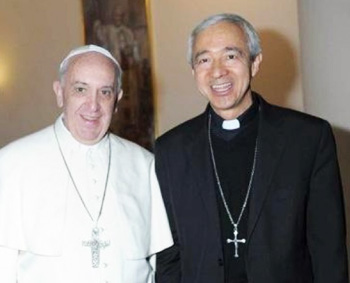 He did not, however, address the connection between the revolutionary changes and the cataclysmic decline in vocations to the priesthood that followed in the wake of Vatican II.
He did not, however, address the connection between the revolutionary changes and the cataclysmic decline in vocations to the priesthood that followed in the wake of Vatican II.
When the Congregation for the Clergy issued its new guidelines in 2016 for the selection and formation of candidates for the priesthood, Bishop Wong was enthusiastic about the new approach precisely because of its revolutionary nature. For those who might be tempted to think that this document ‒ entitled The Gift of the Priestly Vocation, also known as the Ratio Fundamentalis Institutionis Sacerdotalis ‒ had departed from the standards outlined in Vatican II, he assures us that it was faithful to the Council:
“The Ratio Fundamentalis Institutionis Sacerdotalis finds its origin in the first article of the Conciliar decree Optatam Totius. It establishes general norms that will subsequently be applied to different cultural contexts, according to the reality of each country.
"The focus is on the dialogue between the universal view of the Holy See and the specific perspective of the Conference of Bishops. The raison d’être for this dialogue lies in the Conciliar determination that envisages priestly formation with a pastoral objective. It is not intended to standardize training, but to set forth those fundamental principles, the implementation of which would be determined by respective Episcopal Conferences.”2
Thus, Rome had deliberately jettisoned its central control over the curricula and discipline used in seminaries, with consequent chaos in doctrinal, liturgical and moral areas, which has actually taken place on a global scale after the Council. Priestly formation is now determined by whatever ideas progressivist Bishops around the world have managed to impose via national Episcopal Conferences, which can vary from country to country – hardly a recipe for orthodoxy and unity.
Bishop Wong is evidently keen to keep this dystopian situation in operation, judging by his Congregation’s criteria for the exclusion of candidates who do not fit in:
“Admission to seminary however, must be denied to certain anomalous kinds”.
These he facetiously identifies as:
The Prefect of the Congregation for the Clergy
Cardinal Prefect Beniamino Stella, a long-serving member of the Vatican’s Diplomatic Corps, put his skills to full use in an interview published in the Osservatore Romano in which he presented the Congregation’s guidelines on seminary formation in the most glowing terms. We must keep in mind that The Gift of the Priestly Vocation was thoroughly imbued with the new theology of Vatican II, and he was proud to announce that these guidelines were all approved by Francis.
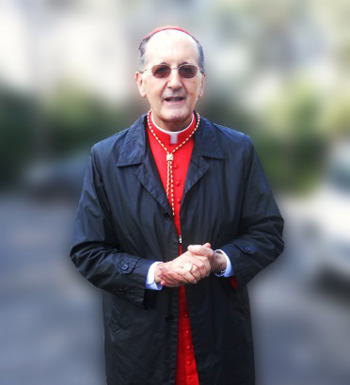 We will examine how the document stays within the “Overton window” of discourse that limits the parameters of discussion only to those ideas that the progressivists find acceptable. Any policies that fall outside this restricted frame of reference determined by Vatican II are deemed politically incorrect, extreme, rigid or retrograde.
We will examine how the document stays within the “Overton window” of discourse that limits the parameters of discussion only to those ideas that the progressivists find acceptable. Any policies that fall outside this restricted frame of reference determined by Vatican II are deemed politically incorrect, extreme, rigid or retrograde.
In his interview, Card. Stella spoke in the same register as Vatican II, that is to say, in a spirit of rejection of the past. So, naturally, out of the Overton window were thrown key concepts of seminary training that the Church, in her wisdom, had considered essential to the theological and moral formation of future priests. In particular, he stated that “old sacral and bureaucratic views of ministry [must] be surpassed, so that we may have priests passionately motivated by the Gospel, capable of ‘feeling with the Church’ and being, like Jesus, compassionate and merciful ‘Samaritans.’”4
He was, of course, referring to the new theology of the priesthood, largely modelled on the Protestant concept of ministry, which was conceived as primarily “pastoral” in character. It is clear from Card. Stella’s words that the intention of the reform was to displace the “sacral” model of the priest that the Council of Trent had identified as the essence of the Catholic priesthood.
Fr. Yves Congar, one of the chief influences behind the drafting of Presbyterorum Ordinis,5 considers “departure from Tridentism” as one of the great “benefits” that Vatican II “has brought to the Church and even, one might say, to the world.”6
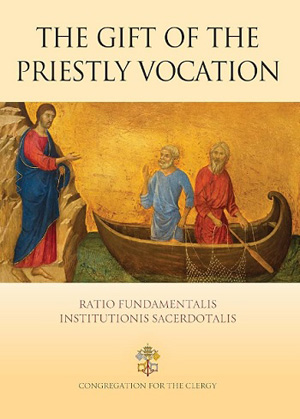 But this resulted in an inversion of the ends of the priesthood. Priests would no longer be trained to think of themselves as the “man of the Mass” who is consecrated primarily to confect the Eucharist through Transubstantiation – a term definitely excluded from the Overton window. Instead, priority over the Mass and the Sacraments is given to a corporate “Mission” shared with all the faithful, to a life immersed in the secular and profane world, with the goal of helping to improve conditions in this life.
But this resulted in an inversion of the ends of the priesthood. Priests would no longer be trained to think of themselves as the “man of the Mass” who is consecrated primarily to confect the Eucharist through Transubstantiation – a term definitely excluded from the Overton window. Instead, priority over the Mass and the Sacraments is given to a corporate “Mission” shared with all the faithful, to a life immersed in the secular and profane world, with the goal of helping to improve conditions in this life.
Hence, the Conciliar decrees and subsequent documents insist to an obsessive degree that priests must not be “isolated” from the faithful, should have “compassion” and “understanding” and show evidence of psychological “maturity.” All these sly criticisms – which subtly undermine traditional seminary training – are reinforced by Francis in his constant rebukes to traditionally formed priests for their “rigidity” in adhering to Tradition.
As for the remedy proposed by Stella for the supposed ills of Tradition, he recommends the application of large doses of “accompaniment” and “dialogue” in the seminary in order to achieve the much-vaunted “affective maturity” which was supposedly lacking in pre-conciliar priests:
“Only in this way will it be possible to have priests with friendly traits, who are authentic, loyal, interiorly free, affectively stable, capable of weaving together peaceful interpersonal relationships and living the evangelical counsels without rigidity, hypocrisy or loopholes”.
But this gives a different purpose to the training and ordaining of priests. The faithful do not need priests to be their friends, partners, brothers or psychological counsellors but, rather, Fathers who extend to them the means of eternal life from the cradle to the grave. This aspect of spiritual fatherhood is entirely lacking in the Cardinal’s address, as is any mention of the priest’s primary duty to offer the Holy Sacrifice of the Mass.
In the same interview, the Cardinal continues on the subject of one of Francis’s favorite themes – “discernment”:
“He who follows the Gospel way and who immerses himself in life in the Spirit, overcomes both an ideological as well as a rigorist approach, discovering that the processes and situations of life cannot be classified through inflexible schemata or abstract norms, but instead need listening, dialogue and interpretations of the heart’s movements.”
We cannot fail to note a close similarity between the Cardinal’s vacuous choice of words and phrases and the language of the Vatican II documents themselves. Both are characterized by a cloying sentimentality and are expressed in vague, utopian terms intended to arouse positive emotions about the reforms.
The Cardinal then expanded on the meaning of discernment for seminarians:
“While speaking to the most recent Assembly of the Society of Jesus, Francis expressed his worries regarding this subject: ‘I am noticing’, he said, ‘the lack of discernment in the formation of priests. We are risking, in fact, becoming accustomed to ‘black and white’ and to that which is legal. We are quite closed, by and large, to discernment.
"One thing is clear, today in a certain quantity of Seminaries a rigidity has been re-established which is not related to situational discernment’. The principal challenge upon which the Ratio is intended to concentrate was suggested to us, yet again, by Pope Francis: to form priests who are ‘visionaries in discernment’ (Misericordia et misera, n. 10)”.
What are we to discern from all this? It is nothing more than a rehash of the “Situational Ethics” that had entered the seminaries in the 1960s and continues to subvert the minds of candidates for the priesthood in our day.
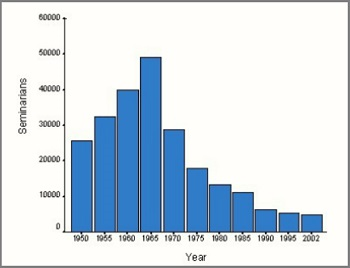 Straight after the Council, the training of seminarians immediately felt the effects of these revolutionary ideas expressed in terms of modern pedagogy, sociology and psychology (with the latter proven to have directly contributed to instances of moral perversion among the clergy and the collapse of many religious orders).
Straight after the Council, the training of seminarians immediately felt the effects of these revolutionary ideas expressed in terms of modern pedagogy, sociology and psychology (with the latter proven to have directly contributed to instances of moral perversion among the clergy and the collapse of many religious orders).
These modern approaches, which are imbued with false philosophies antagonistic to the Catholic Faith, such as Marxism, Freudianism, Feminism etc., are made compulsory in the training of seminarians, and are reiterated three times in Optatam totius (§§ 2, 10, 20).
Card. Stella, who was a faithful supporter of Vatican II, confirmed the fundamentally anthropological emphasis of the Council when he addressed these words to priests: “Let yourselves be sustained and taught by pastoral life and by the People of God.”7
Under the guise of “human development,” post-Conciliar seminary reform has enabled the word of man to triumph over the Word of God, leading to the gradual secularization of the priesthood in an ever downward spiral.
Continued

“For 10 years now I have been a close witness of the way the Latin American and Caribbean Seminaries Organization (OSLAM), together with national Seminary organisations, has moved towards what we have called a ‘Copernican revolution,’ a radical change in focus.”1

Bishop Wong, Secretary for Seminaries
When the Congregation for the Clergy issued its new guidelines in 2016 for the selection and formation of candidates for the priesthood, Bishop Wong was enthusiastic about the new approach precisely because of its revolutionary nature. For those who might be tempted to think that this document ‒ entitled The Gift of the Priestly Vocation, also known as the Ratio Fundamentalis Institutionis Sacerdotalis ‒ had departed from the standards outlined in Vatican II, he assures us that it was faithful to the Council:
“The Ratio Fundamentalis Institutionis Sacerdotalis finds its origin in the first article of the Conciliar decree Optatam Totius. It establishes general norms that will subsequently be applied to different cultural contexts, according to the reality of each country.
"The focus is on the dialogue between the universal view of the Holy See and the specific perspective of the Conference of Bishops. The raison d’être for this dialogue lies in the Conciliar determination that envisages priestly formation with a pastoral objective. It is not intended to standardize training, but to set forth those fundamental principles, the implementation of which would be determined by respective Episcopal Conferences.”2
Thus, Rome had deliberately jettisoned its central control over the curricula and discipline used in seminaries, with consequent chaos in doctrinal, liturgical and moral areas, which has actually taken place on a global scale after the Council. Priestly formation is now determined by whatever ideas progressivist Bishops around the world have managed to impose via national Episcopal Conferences, which can vary from country to country – hardly a recipe for orthodoxy and unity.
Bishop Wong is evidently keen to keep this dystopian situation in operation, judging by his Congregation’s criteria for the exclusion of candidates who do not fit in:
“Admission to seminary however, must be denied to certain anomalous kinds”.
These he facetiously identifies as:
- “Those with a big head but a small body (intellectualism)”; [i.e. Francis’s “Doctors of the Law”/ “Pharisees”/ Scholastic theologians]
- “Those with a strong spirit but a fragile mind and body (spiritualism)”; [i.e. devoted to the Rosary, the traditional Mass and traditional forms of piety, asceticism etc.]
- “Those who boast of having great pastoral interest but possess little motivation (pastoralism)”; [i.e. who see priests as having a separate identity from the laity and do not, in Francis’s words, “smell of the sheep”]
- “Those with a strong body but who have a small mind and spirit (superficiality).” [i.e. having a too narrow, “outdated” theological outlook, attached to rules and rubrics, not open to Ecumenism, Religious Liberty and Synodality, as promoted by Vatican II and Pope Francis]3
The Prefect of the Congregation for the Clergy
Cardinal Prefect Beniamino Stella, a long-serving member of the Vatican’s Diplomatic Corps, put his skills to full use in an interview published in the Osservatore Romano in which he presented the Congregation’s guidelines on seminary formation in the most glowing terms. We must keep in mind that The Gift of the Priestly Vocation was thoroughly imbued with the new theology of Vatican II, and he was proud to announce that these guidelines were all approved by Francis.

Card. Beniamino Stella
In his interview, Card. Stella spoke in the same register as Vatican II, that is to say, in a spirit of rejection of the past. So, naturally, out of the Overton window were thrown key concepts of seminary training that the Church, in her wisdom, had considered essential to the theological and moral formation of future priests. In particular, he stated that “old sacral and bureaucratic views of ministry [must] be surpassed, so that we may have priests passionately motivated by the Gospel, capable of ‘feeling with the Church’ and being, like Jesus, compassionate and merciful ‘Samaritans.’”4
He was, of course, referring to the new theology of the priesthood, largely modelled on the Protestant concept of ministry, which was conceived as primarily “pastoral” in character. It is clear from Card. Stella’s words that the intention of the reform was to displace the “sacral” model of the priest that the Council of Trent had identified as the essence of the Catholic priesthood.
Fr. Yves Congar, one of the chief influences behind the drafting of Presbyterorum Ordinis,5 considers “departure from Tridentism” as one of the great “benefits” that Vatican II “has brought to the Church and even, one might say, to the world.”6

A progressivist manual for seminaries
Hence, the Conciliar decrees and subsequent documents insist to an obsessive degree that priests must not be “isolated” from the faithful, should have “compassion” and “understanding” and show evidence of psychological “maturity.” All these sly criticisms – which subtly undermine traditional seminary training – are reinforced by Francis in his constant rebukes to traditionally formed priests for their “rigidity” in adhering to Tradition.
As for the remedy proposed by Stella for the supposed ills of Tradition, he recommends the application of large doses of “accompaniment” and “dialogue” in the seminary in order to achieve the much-vaunted “affective maturity” which was supposedly lacking in pre-conciliar priests:
“Only in this way will it be possible to have priests with friendly traits, who are authentic, loyal, interiorly free, affectively stable, capable of weaving together peaceful interpersonal relationships and living the evangelical counsels without rigidity, hypocrisy or loopholes”.
But this gives a different purpose to the training and ordaining of priests. The faithful do not need priests to be their friends, partners, brothers or psychological counsellors but, rather, Fathers who extend to them the means of eternal life from the cradle to the grave. This aspect of spiritual fatherhood is entirely lacking in the Cardinal’s address, as is any mention of the priest’s primary duty to offer the Holy Sacrifice of the Mass.
In the same interview, the Cardinal continues on the subject of one of Francis’s favorite themes – “discernment”:
“He who follows the Gospel way and who immerses himself in life in the Spirit, overcomes both an ideological as well as a rigorist approach, discovering that the processes and situations of life cannot be classified through inflexible schemata or abstract norms, but instead need listening, dialogue and interpretations of the heart’s movements.”
We cannot fail to note a close similarity between the Cardinal’s vacuous choice of words and phrases and the language of the Vatican II documents themselves. Both are characterized by a cloying sentimentality and are expressed in vague, utopian terms intended to arouse positive emotions about the reforms.
The Cardinal then expanded on the meaning of discernment for seminarians:
“While speaking to the most recent Assembly of the Society of Jesus, Francis expressed his worries regarding this subject: ‘I am noticing’, he said, ‘the lack of discernment in the formation of priests. We are risking, in fact, becoming accustomed to ‘black and white’ and to that which is legal. We are quite closed, by and large, to discernment.
"One thing is clear, today in a certain quantity of Seminaries a rigidity has been re-established which is not related to situational discernment’. The principal challenge upon which the Ratio is intended to concentrate was suggested to us, yet again, by Pope Francis: to form priests who are ‘visionaries in discernment’ (Misericordia et misera, n. 10)”.
What are we to discern from all this? It is nothing more than a rehash of the “Situational Ethics” that had entered the seminaries in the 1960s and continues to subvert the minds of candidates for the priesthood in our day.

A clear decline in U.S. vocations after Vatican II
These modern approaches, which are imbued with false philosophies antagonistic to the Catholic Faith, such as Marxism, Freudianism, Feminism etc., are made compulsory in the training of seminarians, and are reiterated three times in Optatam totius (§§ 2, 10, 20).
Card. Stella, who was a faithful supporter of Vatican II, confirmed the fundamentally anthropological emphasis of the Council when he addressed these words to priests: “Let yourselves be sustained and taught by pastoral life and by the People of God.”7
Under the guise of “human development,” post-Conciliar seminary reform has enabled the word of man to triumph over the Word of God, leading to the gradual secularization of the priesthood in an ever downward spiral.
Continued
- Jorge Carlos Patrón Wong, Coadjutor Bishop of Papantla, México, ‘Candidates for the Priesthood and Religious Life. Selection, Screening and Formation’, United States Conference of Catholic Bishops, February 2012.
- Jorge Carlos Patrón Wong, Archbishop Secretary for Seminaries Congregation for the Clergy, ‘The key aspects of the Ratio Fundamentalis and their application’, Conference of the Bishops of the Philippines, January 27, 2018.
- Ibid.
- “Interview with the Prefect of the Congregation for the Clergy His Eminence, Beniamino Cardinal Stella, ‘The Gift of Priestly Vocation’, Ratio Fundamentalis Institutionis Sacerdotalis,” L’Osservatore Romano, December 7, 2016.
- Y. Congar, My Journal of the Council, p. 867. With reference to the Commission that prepared the draft for the future Presbyterorum Ordinis, Congar states that “the work has been done, essentially, by Lécuyer, Onclin and myself.”
- Y. Congar, Fifty Years of Catholic Theology: Conversations with Yves Congar, edited and introduced by Bernard Lauret, trans. John Bowden, Minneapolis, MN: Fortress Press, 1988, p. 3.
- B. Stella, L’Osservatore Romano, December 7, 2016, commenting on the imminent release of the document, The Gift of the Priestly Vocation, by the Congregation for the Clergy.
Posted February 9, 2024

______________________
______________________
 Volume I |
 Volume II |
 Volume III |
 Volume IV |
 Volume V |
 Volume VI |
 Volume VII |
 Volume VIII |
 Volume IX |
 Volume X |
 Volume XI |
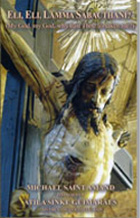 Special Edition |


